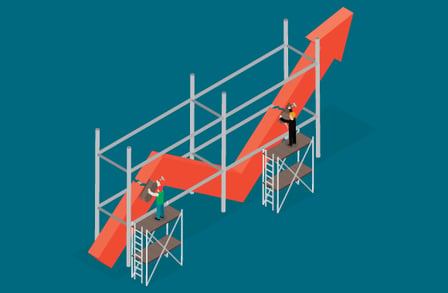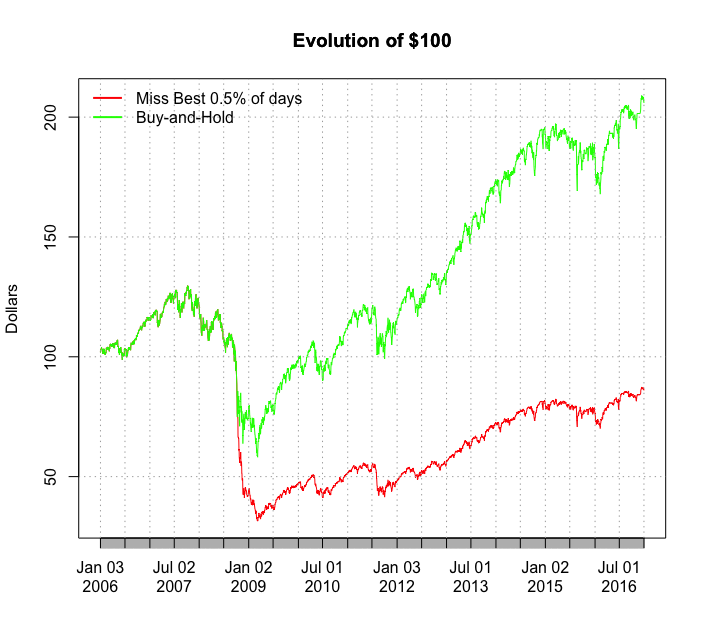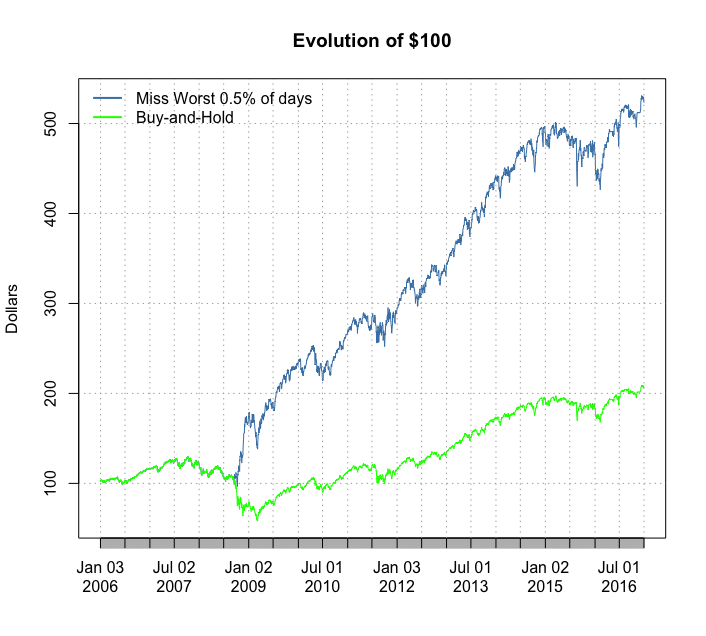By Ron Piccinini, Ph.D., Director of Product Development
An investment’s failure or success is impacted by the worst and best trading days — more than you might imagine. Understand the true value of “tails.”
 Investors know that time in the market is their friend. Stay in the market for a long period of time, and good things will happen, even in times of high volatility. A supporting statistic is often presented: if you miss the best days, your overall return will be dramatically lower.
Investors know that time in the market is their friend. Stay in the market for a long period of time, and good things will happen, even in times of high volatility. A supporting statistic is often presented: if you miss the best days, your overall return will be dramatically lower.
For instance, between Jan. 3, 2006, and Dec. 30, 2016, a buy-and-hold strategy in the S&P500 would have turned a $100 investment into $206.
If you missed the best 0.5% of days (in this case, the best 14 days), the $100 investment would have lost money, and become $86. See chart below:

But what would happen if we were to miss the worst 0.5% of days? The $100 investment would turn into a whopping $523. The chart below illustrates this point:

The S&P500 is hardly an anomaly. We see the same pattern with different investments. For example:
|
$100 investment in: |
Buy-and-hold |
Miss Best Days |
Miss Worst Days |
|
SPY |
$206 |
$86 |
$523 |
|
AGG |
$148 |
$116 |
$191 |
|
GIS |
$279 |
$144 |
$557 |
|
AAPL |
$1,298 |
$370 |
$4,799 |
Conclusions:
- The impact of the worst and best 0.5% of trading days (a.k.a. “the tails”) have a very significant impact on success or failure of an investment
- Avoiding the worst days is in many cases dramatically more impactful than catching the best days
- If the cost of hedging the worst 0.5% days of the S&P500 costed an average of 500bps per year, would it be worth it?
Help your clients see this in their protfolios. Sign up for SmartRisk today!




